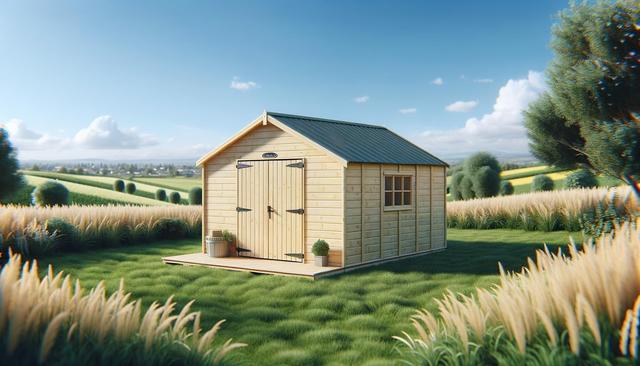Maximizing Outdoor Space with Storage Sheds
One of the most notable benefits of owning a storage shed is its ability to maximize outdoor space. For homeowners with limited indoor storage or a cluttered garage, a shed provides a dedicated area to house items that are not used daily. Whether it’s garden tools, bicycles, or lawn equipment, storing these items outside frees up valuable room inside your home. This space-saving solution is especially useful for properties where every square foot counts.
Storage sheds come in a variety of sizes and designs, allowing you to choose one that complements your yard and meets your storage needs. Small sheds are ideal for hand tools and planting supplies, while larger units can accommodate ride-on mowers, workbenches, or even function as a compact workshop. The key is to evaluate your specific requirements before purchasing or building to ensure the shed serves its intended purpose.
Some common items stored in sheds include:
- Gardening tools and supplies
- Outdoor furniture and cushions
- Recreational gear like bikes and kayaks
- Seasonal décor and equipment
Choosing the Right Material for Durability
When selecting a storage shed, material choice plays a major role in durability and maintenance. The three most common materials are wood, metal, and resin (plastic), each with its own pros and cons. Wooden sheds are often chosen for their classic appearance and natural feel; however, they require regular maintenance to avoid rot and insect damage. Metal sheds offer strong structural integrity and are typically more affordable, but they may be prone to rust if not properly coated.
Resin sheds, made from high-density polyethylene or vinyl, are growing in popularity due to their low maintenance and resistance to weather elements. Unlike wood, they don’t warp or rot, and unlike metal, they are not susceptible to rust. Their lightweight design also makes them easier to install. When choosing materials, consider your climate, the time you’re willing to dedicate to upkeep, and the type of items you’ll be storing.
Material comparison highlights:
- Wood: Aesthetic appeal, customizable, higher maintenance
- Metal: Sturdy, cost-effective, potential rust issues
- Resin: Weather-resistant, low-maintenance, limited custom options
Design Features to Look For
Modern storage sheds come equipped with a variety of design features that enhance usability and convenience. Ventilation panels, skylights, and built-in shelving can make a big difference in how functional your shed is. Good airflow helps prevent mold and mildew, especially when storing items that are sensitive to moisture. Skylights or windows allow natural light in, making it easier to find things without needing a flashlight or electrical work.
Security is another important aspect. Many storage sheds include lockable doors or can be fitted with padlocks to protect valuable tools and equipment. Double doors also make it easier to move large items in and out, while ramps can be useful if you plan to store wheeled equipment like lawnmowers or wheelbarrows.
Key features to consider:
- Ventilation for airflow
- Windows or skylights for natural lighting
- Lockable doors for security
- Built-in shelves or hooks for organization
Installation and Placement Tips
Proper installation and placement are essential for getting the most out of your storage shed. The first step is to choose a level location that offers good drainage. Placing the shed on uneven or soggy ground can lead to structural issues over time. Many users opt for a gravel or concrete base to provide a sturdy foundation and prevent water accumulation.
Consider accessibility when deciding where to place the shed. It should be close enough to your home or garden area for easy access but also positioned in a way that doesn’t obstruct pathways or views. Local building codes and homeowner association regulations may also influence placement, so it’s wise to check those before installing.
Installation options include:
- DIY assembly using pre-fabricated kits
- Professional installation services
- Custom-built sheds tailored to specific dimensions and features
Long-Term Benefits and Maintenance
Investing in a storage shed offers long-term advantages that go beyond immediate organization. Over time, protecting your tools, equipment, and outdoor gear from the elements can extend their lifespan and reduce replacement costs. A well-maintained shed also adds to the overall appearance of your property and may even boost its resale value.
Maintenance needs vary depending on the shed material. Wooden sheds require occasional painting or staining and should be checked for signs of rot or pests. Metal sheds may need rust treatment and protective coatings, particularly if located in humid areas. Resin sheds are typically the easiest to maintain, needing only occasional cleaning with water and mild detergent.
Long-term care tips:
- Inspect the roof and walls annually for damage
- Keep the interior clean and organized
- Lubricate hinges and locks regularly
- Remove debris from the surrounding area to prevent moisture buildup
Conclusion: A Smart Storage Solution
Storage sheds are a practical and versatile addition to any property, offering an organized solution for outdoor item management. Whether you’re a gardening enthusiast, a DIY hobbyist, or simply looking to declutter your garage, a well-chosen shed can meet a range of storage needs. By considering factors like material, design, and placement, you can ensure your shed adds long-term value and convenience to your home. Investing in a quality storage solution today can lead to better organization and peace of mind for years to come.




Leave a Reply